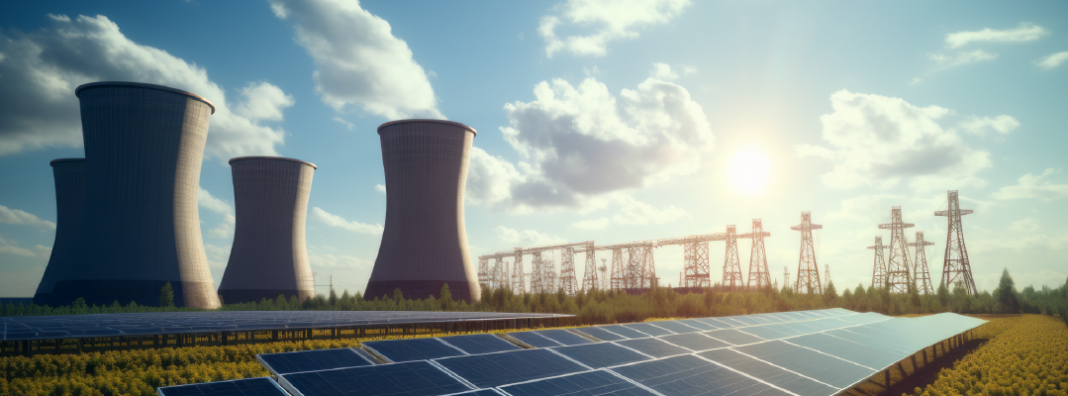
Iceland should be America’s energy model. Not because the small Nordic country generates almost all of its electricity from renewable sources. Rather, because Iceland uses more than twice as much electricity per capita than the United States.
If America is serious about protecting the environment while transforming people’s lives, we need to produce far more power.
This solution contradicts the conventional wisdom. Americans have been trained to view electricity usage as a necessary evil, conditioned to flip off the light switch as soon as we leave a room. Such fear helps drive the transition to renewables, which has largely been an effort to replace traditional energy sources instead of increasing overall supply.
Even when politicians talk about “energy efficiency,” the focus is on reducing overall use, not producing more energy more affordably. Last year, Americans used a mere 3% more electricity per capita than we did in 1965.
Iceland knows better. Its electricity use has soared by 321% since 1965. Every joule makes it easier to live in a frequently frozen landscape, enabling the production of weather-resistant building materials, powering heavy-duty heating systems and otherwise improving life in a hostile setting.
Other countries that use more electricity than the United States include Qatar (the world’s biggest electricity user per capita), the United Arab Emirates, Kuwait, Oman and Saudi Arabia. Where Iceland is fighting the cold, the Middle East is fighting to stay cool.
More energy will help humanity flourish
These countries know that energy is essential to human flourishing, a lesson America once took to heart.
When we encountered a challenge – from hostile weather to horrible diseases – we quite literally powered our way past it, using electricity to manufacture new technologies, medical cures and so much more. We even used energy to find better ways to use energy, profoundly benefitting the environment.
Our past is a far cry from the present. When extreme weather hits, politicians from California to New York now urge citizens to cut electricity use. A year ago, California even asked electric vehicle owners to stop charging their cars. Had EVs existed a century ago, we simply would have produced more power – like Iceland does today.
What would happen if America did that, more than doubling our per capita electricity use? Whereas Iceland need energy to make the land habitable, America could use it to transform our people’s health and happiness, while far more effectively fighting climate change.
Abundant electricity can help ease water shortages
Some of the biggest innovations in human history haven’t arrived on a mass scale because there isn’t enough power to make them viable.
In agriculture, we need more electricity for “vertical farming” – think enormous warehouses that use artificial light to grow all the crops we’ll ever need, more efficiently and affordably. We wouldn’t use nearly as much land for farming, an incredible environmental boon.
Ditto desalination plants, which aren’t widespread because of their massive energy needs. If we took the salt out of essentially limitless ocean water, we could stop taking even a drop out of the Colorado River and the Ogallala Aquifer, with huge economic and environmental benefits.
With more electricity, we could manufacture more environmentally friendly and long-lasting homebuilding materials, finally moving past the bricks and wood we’ve used since ancient times.
And transportation would never be the same. If we had enough energy to electrify America’s trucking fleet, we’d stop using diesel while dropping the cost of shipping, meaning nationwide savings on groceries and everyday goods. If we ever want flying cars and hyperloops, we need the power that makes such advances possible.
What’s stopping this environmental and economic progress?
Paradoxically, environmental concerns. While America is heavily investing in limited and highly intermittent energy sources like wind and solar, it has underinvested in nuclear energy, which is essential to scaling electricity production.
While some in the environmental movement stoke fears over nuclear energy, the data shows it’s safe, in addition to being reliable. Only 22% of Americans say the federal government should discourage the production of nuclear power.
Iceland has rapidly scaled electricity production using its unique natural resources of abundant water and geothermal. America can do the same with our specific resources, which are perfectly suited to a dramatic expansion in nuclear power.
Yet for that to happen, the federal government must abandon its current regulatory regime, which is a death knell for nuclear power. Only two nuclear reactors have come online since the mid-1990s; only one was built from scratch, the first in 30 years.
With most nuclear plants in the latter half of their life cycles, nuclear power generation is likely set to shrink, when it should grow by leaps and bounds.
We should look to Iceland for inspiration. If that small Nordic country can use so much electricity so effectively, then America can, too, and nuclear power is the most obvious solution.
The American people deserve a future of limitless energy, with all the economic and environmental progress it entails. When are we going to demand it?



 USA Today
USA Today